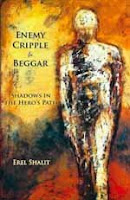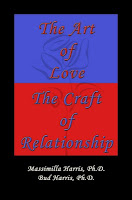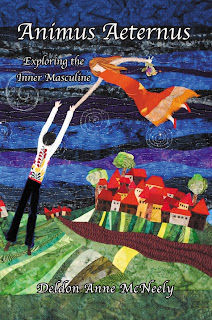article by Lawrence H. Staples
Suffering: The Price Guilt Exacts
Guilt can cause prolonged suffering. We suffer regardless of whether the guilt serves essential human needs or not, whether it has outlived its usefulness or not, whether it is deserved or not, whether it is meaningful or not, and whether it was incurred intentionally or not. Nor does it matter whether we have a religious background or not, and if we have a religious background, it does not matter which religion. Even if our parents were atheists or agnostics, we are subject to guilt. They often had dogmatic and rigid beliefs of their own. With the possible exception of sociopaths, all of us suffer from guilt, to some degree. The point is that all guilt, regardless of its origin or meaning, brings pain that we need to treat and relieve.
Fortunately, the psyche has a self-regulatory function that helps soften the pain of guilt it inflicts. It appears to function somewhat like the sympathetic and parasympathetic operation of the physical body’s autonomic nervous system that protects us with its opposite tendencies. In the physical body’s system, one part may dilate the pupil and the other contract it. One part may inhibit the heartbeat while the other stimulates it.
The mechanism of guilt formation gives us a clue as to how protective opposition works similarly in the psyche. The mechanism of guilt formation is complex. Much of it takes place out of our awareness. What begins as conscious guilt that is palpably felt, is often displaced by other thoughts and feelings. That is, the initially conscious guilt tends to become unconscious. The ego is protected with a variety of “autonomic” defenses, like rationalization, displacement, and projection. We “sin” and then we experience guilt. Then, in retrospect, we rework the experience and with the aid of ego defenses come to a new formulation that dresses our guilt in new meaning. For example, we may come to blame others for our transgressions. Or our sexual instincts may overwhelm us. After enough transgressions, and enough processing of our guilt, we often can come to feel that sex is okay. At that point the guilt experienced drops into the unconscious and is replaced by justifications. This reworking of our guilt gives us temporary relief. The defenses that render our guilt unconscious and less painful operate involuntarily.
Part of the paradoxical beauty of the psyche is its capacity to create one thing and its opposite. It can create pain and it can soothe the very pain it creates. Like the body, however, the psyche can be assaulted by disorders that overwhelm its natural defenses and require intervention. In the case of guilt, the feeling, after it has been treated by our natural defenses, is buried in the unconscious. While the guilt may for long periods in our life not cause intolerable pain, it can fester, become toxic, and behave as a kind of saboteur. Then, later it may overwhelm the old defenses and storm back into conscious awareness. At that time, we face the pain again and have to assuage it.
Our earliest experience of guilt in childhood is like a kind of psychic slap that disturbs our youthful innocence. Guilt shatters the psychic wholeness with which we are born. Unfortunately, some of the split off parts are not intrinsically bad. They are needed to complete our development.
No matter how we incurred the guilt, we eventually need to seek relief from its pain. The means of expiating guilt is as important to optimal human development as guilt itself. Without the means of relief, guilt induced suicide might become a greater threat to human existence than disease. Part of the healing process involves becoming conscious of the nature and origin of the many types of guilt we experience. The following sections outline some of the spiritual, psychological, and educational steps we can take to assuage its wounds.
Giving Back: The Promethean Way to Assuage our Guilt
Because guilt is important in the formation and maintenance of the opposites and, thus, consciousness, and because it also serves the self-regulatory functions of the psyche, it appears to be a necessity for human life, just as food is. While food is a necessity, its waste products, nevertheless, have to be discharged after the food has performed its essential function of providing nutrients. Otherwise, the waste becomes toxic and makes us ill. It makes no difference whether the food we originally ingested was “good” or “bad,” nutritious or unhealthy. Similarly, it makes little difference whether the guilt was good for us or not so good, it has to be discharged or it will make us sick. With food the waste product itself becomes valuable when it is converted into fertilizer. When unassimilated guilt is discharged in the form of giving back to society, the otherwise toxic portion of guilt is converted into something valuable. This is the Promethean Way to discharge guilt. It is an especially effective way to relieve guilt that has overwhelmed our self-regulatory protective functions. It is precisely because guilt is a necessity that we must find ways to discharge its residual toxicity.
We have to give value back to the community if we are to discharge the guilt we incur for transgressing collective mores. Psychologically and spiritually it satisfies a deep human need. Our mythology reflects the ancient wisdom that this is so.
In Part I of Guilt with a Twist: The Promethean Way, I touched briefly on the lives of many famous figures that “sinned” but gave much back. Joan of Arc, Mahatma Gandhi, Socrates, Copernicus, Galileo, Martin Luther King, Alfred Kinsey, Rosa Parks, Betty Friedan, Darwin, Solzhenitsyn, Susan B. Anthony, Nelson Mandela and many other audacious people pushed themselves far outside the conventional fences that had been built around them. They also contributed much to the very societies whose rules they broke. Life is clearly full of examples of “bad” people giving something good to society. This could also include the so-called Robber Barons such as the Vanderbilts and Andrew Carnegie. The guilt-ridden Carnegie gave us magnificent libraries. All of these famous individuals were “sinners,” violators of the mores and existing standards of the communities in which they lived.
Individuation is an enlargement of personality. We become whole. We become bigger and more complete. The most important thing we can return to society is a fuller self. This fuller self might be expressed in music or painting or poetry or dance. It might be expressed in science or medicine. It might be expressed as a political or military revolutionary. It might be expressed as a tutor or a teacher, as a minister or a therapist, or as a community volunteer in countless ways. Or it may be expressed simply as a caring person, who gives helpful time and energy to family and friends. One does not have to be so grand as Mother Theresa or Albert Schweitzer or Mahatma Gandhi to return real value to the world. The giving of our complete selves to the collective is a ransom we pay for being an individual in a collective society. A more complete self is the currency we pay as expiation for the achievement of individuality.
There are many who quietly and inconspicuously follow the Promethean way without wide recognition. One example of someone going outside the fence, into the shadow, and finding there something that eventually served her own growth and contributed to the community is a woman patient who in the spring of her senior year in high school, when 17 years old, received a scholarship to a prestigious college. From a poor family, a scholarship was the only way she could get an education and escape poverty and abuse. About the same time she got the scholarship, however, she also got pregnant. While teen pregnancy is not easy even today, it then carried almost unbearable guilt and untold complications. Abortion was not an option for her; she was both Catholic and poor. The church and her devout parents were opposed to her giving the baby up. After much agonizing she decided to offer her baby for adoption so that she could accept the scholarship. She carried and wrestled with a heavy load of guilt for most of her adult life. The burden she carried stemmed not only from her sexual conduct but also from her feeling of selfishness that was unavoidable when she gave priority to her educational opportunity. The guilt eroded her sense of self-esteem and self-worth and she searched for ways to find peace.
Despite the burden of this experience, she became a highly respected researcher in the area of children’s health. She made contributions that were of substantial benefit to her special discipline. She came to feel that her work and contributions were driven by her need to expiate her guilt, regain some of her lost sense of worth, and find some modicum of peace. We could speculate that the very nature of her “sins” led her to the particular field she chose and uniquely qualified her for that work. Who is to say what the “right” decision would have been? The scholarship was the only way she saw to develop her enormous gifts. We never know the road not taken but we do know that her way led her to contribute more, perhaps, to children than the raising of a single child. While we can’t be sure of this latter point, we do know for a fact that she did much good. In high school, she had jumped outside the fence and violated all her conventional and religious upbringing. Her work as an adult helped her come back inside the fence and bring with her useful, new knowledge and some relief from her profound feelings of guilt.
Another example is a patient I’ll call Ellis. Both the blessing and the curse of alcoholism can be seen in the story of this recovered alcoholic. Ellis started off in a blaze, fizzled badly, and then later reignited to lead a wonderfully useful life. He graduated with high honors from college, started as a reporter, married, and had a nice family. He was not long out of college, however, before he became a serious drinker. The booze did not seem to interfere with his life at first. He was an incredibly good investigative reporter, and his abilities were recognized. Over the years, however, his drinking steadily increased and he began to miss assignments and deadlines. The owner and editors put up with it because he was so good. Even when they knew he was drinking on the job, he could write better when he was half drunk than most people could sober. Things finally reached the point when the publisher and owner confronted him. His slurred response was that his personal business was none of the publisher’s business and the publisher could kiss his ass. Not surprisingly, he was fired. Not only did he lose his job, but also his wife divorced him, and his children refused to speak to him.
Luckily, he found AA. He got sober, and back into newspaper work. It was not easy because his reputation had preceded him, but his talents blossomed again and in a few years he was a managing editor. He attended AA meetings several times a week and began to lead a quiet, helpful life. He found that his spiritual practices and helping other alcoholics relieved a lot of the burden of the guilt he carried. During the rest of his life, he helped hundreds of alcoholics recover.
Ray was one of the alcoholics Ellis helped. When he was drinking, Ray was bad, and he ended up on a chain gang. Ellis led AA meetings at prisons, where he met Ray. Ellis could see that Ray was bright and curious, even though he had not finished high school. When Ray was released, Ellis offered him a menial job at the newspaper. Soon, Ellis was teaching him how to write, and it quickly became clear that Ray had real gifts, and soon became a feature editor.
After leaving newspaper work, Ray wrote several novels, and also taught writing at local colleges. For the remainder of his life Ray helped hundreds of other alcoholics recover. Whether helping other alcoholics or contributing to the community in other ways, many recovered alcoholics give much back to society. It is an important way for them to deal with their guilt. Much of the giving back they do is invisible and unrecognized, because it is done anonymously, in line with the principles of AA.
Like most people, alcoholics usually start life inside the barbed wire fence that surrounds their egos, but most then venture far outside the fence. Some then move back inside the fence, where they contribute in ways usually not widely seen or noted. They bring back knowledge and experience gained, painfully, outside the fence. The knowledge and experience they gain outside the fence actually turn out to be gifts that uniquely equip them to help other alcoholics. No one can help alcoholics as effectively as recovered alcoholics, who have paid a huge price to gain this particular helping gift. If an alcoholic comes to me while he is still drinking, I encourage him to go to AA. I tell him that I cannot help him until he gets sober. Practicing alcoholics have a hard time telling the truth. Active alcoholics going to therapists are like someone going to an internist with another person’s urine sample. The therapist would be working with false data and cannot be of much help. On the other hand, alcoholics who are sober and who have done the AA spiritual work are among the most honest people I know.
Alcoholics generally experience enormous guilt. They need much help to heal deep wounds. Most recovered alcoholics find giving back to be a powerful salve for those wounds.
Because guilt is a necessity that causes us to suffer, and because giving back relieves our suffering, it is enlightened self-interest to do it.
Other Spiritual Approaches
It is as if from the beginning we have been “wired” to sin, to incur guilt, and then to seek some way to atone for it. It is the pervasive experience of guilt, and humanity’s need for relief from it, that led most healers, in various cultures and societies, to devise ways to help people deal with guilt.
For example, Yom Kippur is an important Jewish holiday, called the Day of Atonement, a ritual that helps them deal with the experience of guilt. The other great religions also have rituals that serve this purpose. In the Christian community, baptism is a widely practiced ritual whose purpose, among others, is the washing away of guilt and the forgiveness of sin. Confession, a ritual practiced in differing ways, tends to ease the pain and the burden of guilt.
In years past, most people who suffered guilt went to their priest or minister or rabbi for help. However, some of those who turned to religion for relief were acting like alcoholics who turned to drink for relief, to the “hair of the dog that bit them.” Most religions, however, do have spiritual tools that can help assuage their guilt.
Today, many people turn to therapists and analysts for relief rather than to religion. Therapists and analysts would be wise to borrow some of the spiritual tools that have long been sources of comfort for guilt. On the other hand, if the spiritual tools and religious practices had been sufficient, the practice of psychotherapy probably would not have expanded to where it is today. Many people today simply feel that religion is closer to the problem than to the solution. It is probably also true that many patients do not suspect that guilt is the real culprit behind their pain and suffering. They think their suffering is caused by something that therapists are more qualified to deal with, like depression and anxiety. They may not know that guilt often lurks behind and can be a significant cause of anxiety and depression.
Because therapists are secular and because many of the traditional answers from faith-based sources fail to provide relief, they must develop clinical methods to treat guilt. While therapists of many different persuasions can be helpful in this work, so can gifted religious professionals, friends, and spiritual groups, like twelve-step groups, if they assist without judging the sins or the sinners.
Psychological Approaches . . .
This article is an excerpt from Guilt with a Twist: The Promethean Way by Lawrence H. Staples. Dr. Staples has a Ph.D. in psychology; his special areas of interest are the problems of midlife, guilt, and creativity. He is a diplomate of the C.G. Jung Institute, Zurich, Switzerland, and also holds AB and MBA degrees from Harvard. In addition to Guilt with a Twist: The Promethean Way, Lawrence is author of the popular book
The Creative Soul: Art and the Quest for Wholeness. He is also the co-author, along with Nancy Carter Pennington, of the just published The Guilt Cure which advances a new theory on guilt.
Right now, you can order Guilt with a Twist from the Fisher King Press online bookstore for $9.99 and $5 will be donated to Depth Psychology Alliance.



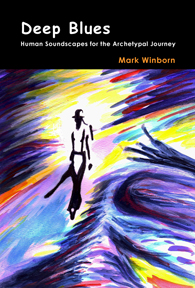







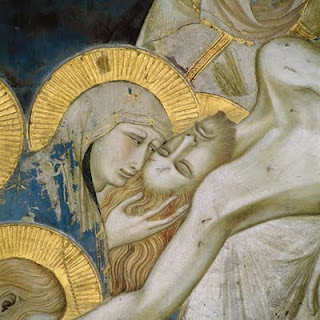




 (San Diego: Harcourt, Brace, Jovanovitch, 1983), p. 240.
(San Diego: Harcourt, Brace, Jovanovitch, 1983), p. 240. (London: Routledge and Kegan Paul, 1985), p. 91.
(London: Routledge and Kegan Paul, 1985), p. 91. (New York: Harper Colophon, 1975), p. xiii.
(New York: Harper Colophon, 1975), p. xiii.

